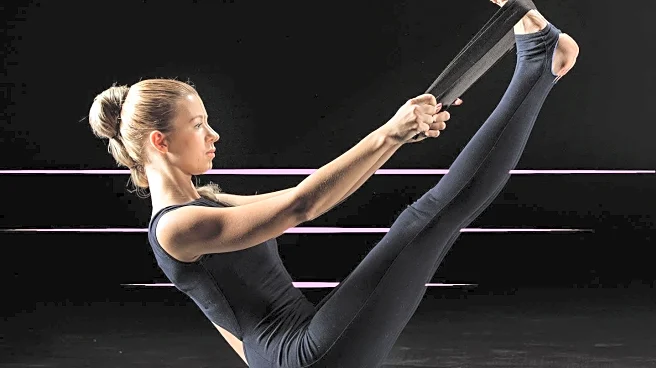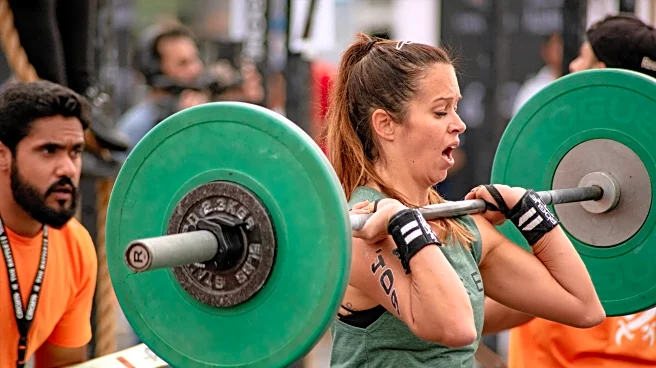What is the story about?
What's Happening?
Physical therapists have identified a common mistake in men's fitness routines: focusing solely on muscle gain without building a foundation of movement quality. Andy Fata-Chan, a physical therapist in New York City, explains that many men concentrate on strength and hypertrophy, neglecting the importance of movement quality. This oversight can lead to overuse injuries and chronic pain, as noted by Renee Moran, a physical therapist in Maine. The mistake often involves performing exercises in the sagittal plane without incorporating variations that improve foundational movement. Proper movement quality involves efficient and safe execution of fundamental patterns like squatting and rotating, which are crucial for preventing injuries.
Why It's Important?
The emphasis on muscle gain over movement quality can lead to significant health risks, including joint injuries and muscle imbalances. This approach is often driven by cultural pressures and social media influences that prioritize aesthetics over functional fitness. Physical therapists warn that neglecting movement quality can result in reduced efficiency in everyday activities and increased injury risk. By focusing on aesthetics, individuals may bypass essential steps that lead to sustainable and healthy fitness habits, ultimately compromising their long-term health and fitness goals.
What's Next?
To address this issue, physical therapists recommend incorporating mobility work, stability drills, and dynamic warmups into fitness routines. They advise slowing down lifts, prioritizing control over load, and seeking professional guidance to ensure proper form. Adjustments such as single-leg calf raises and split squat isometric holds can improve mobility and stability. By focusing on movement quality, individuals can protect their mobility and prevent chronic pain as they age, ensuring a healthier and more sustainable fitness journey.
Beyond the Headlines
The cultural emphasis on muscle gain reflects broader societal values that prioritize physical appearance over health and functionality. This trend highlights the need for a shift in fitness culture towards valuing movement quality and overall well-being. By promoting a balanced approach to fitness, individuals can achieve long-term health benefits and reduce the risk of injury.
AI Generated Content
Do you find this article useful?














